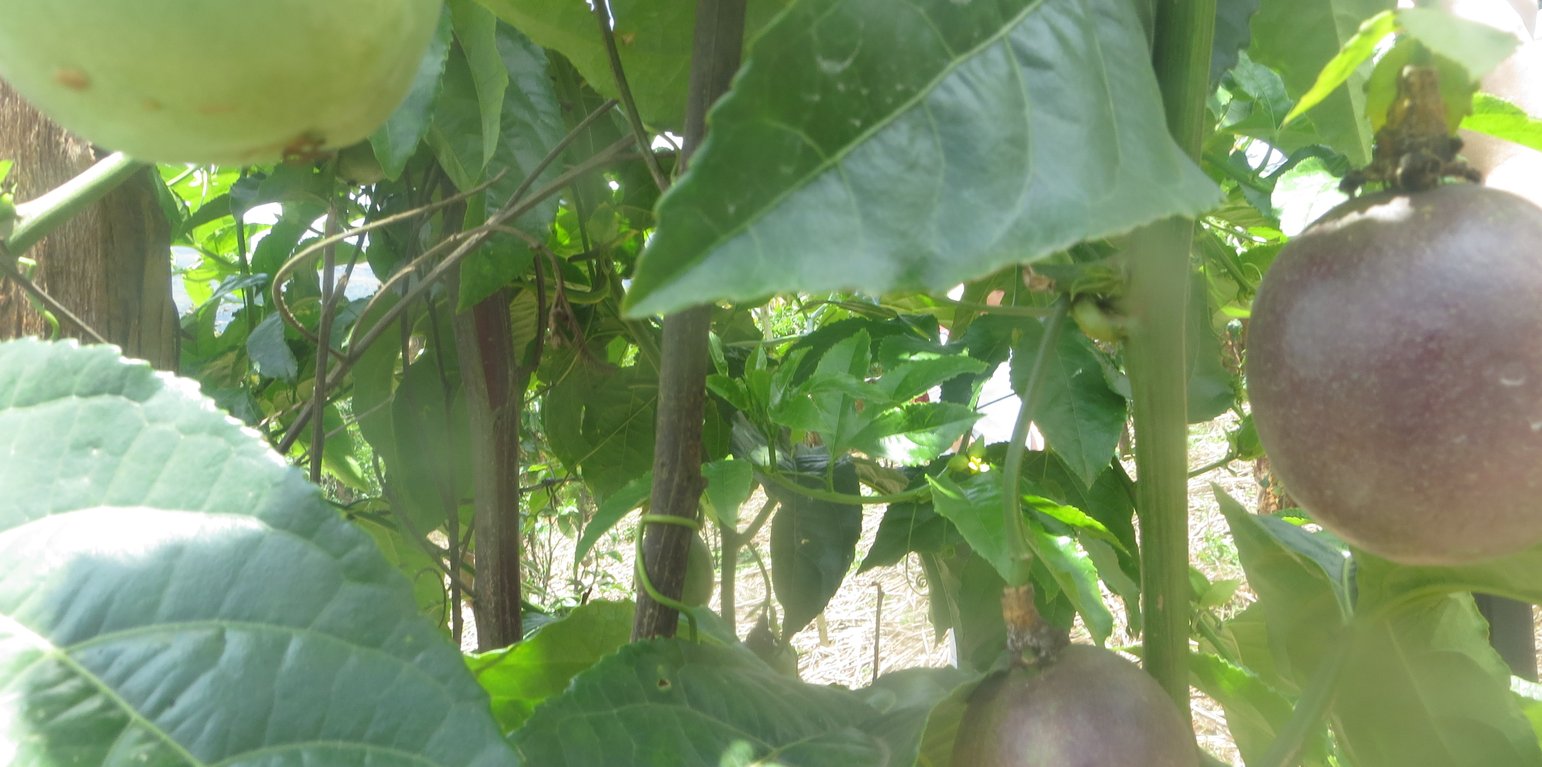



The technology is applied in already existing farmlands, which are individually owned and land users are practicing conventional/traditional farming methods. An average farm size is less than half an acre.
It is built on the fact that when God created the first garden, it was a highly productive rainforest which was in need of nothing. The forest was capable of succeeding even in drought years and never slowed or lost its productivity. The trees never lost their leaves or wilt. They keep on producing flowers, fruits and seeds and are able to carry vast numbers and diversity of animal species. God put mechanisms in place which would allow the fauna, flora and soil to co-exist, with high levels of productivity, no environmental degradation, little or no erosion and a high buffering ability to withstand all the negative parameters of the harsh climate. Therefore, this technology helps to maintain soil structure and texture increasing its ability for water retention and soil fertility, thus increasing crop yields.
The major activities needed to establish the technology include; awareness creation and training land users on the technology, setting up demonstration gardens, identification of contact farmers, supporting them to establish demonstration gardens in the community and follow up support to the implementing farmers.
What the land users dislike about this technology is that it involves a lot of measurements and record keeping, which they are not used to, the mulching material is not readily available and the mulch harbors rodents.

Localização: Rubaya, Rwamucucu and Kyanamira Sub Counties, Kabale District, South Western Region, Uganda
Nº de sites de tecnologia analisados: 10-100 locais
Difusão da tecnologia: Uniformemente difundida numa área
Em uma área permanentemente protegida?:
Data da implementação: 2015
Tipo de introdução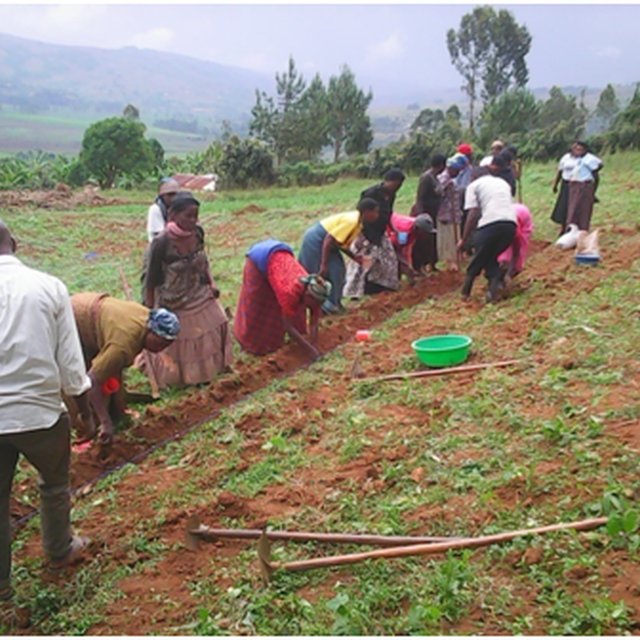
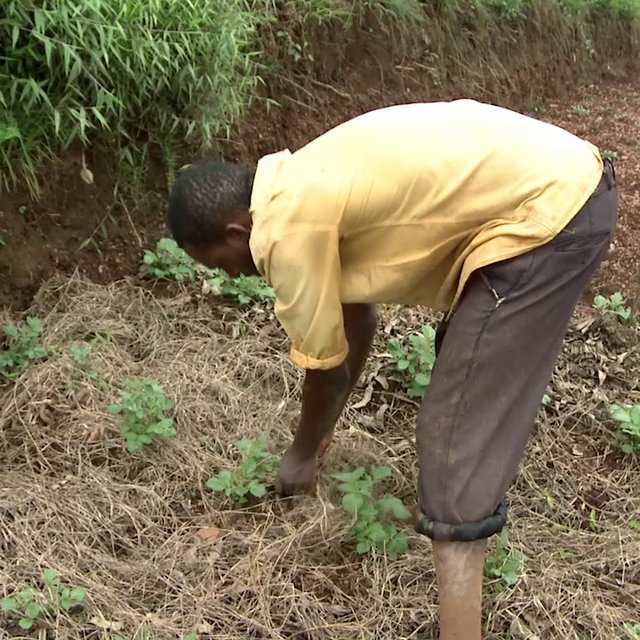






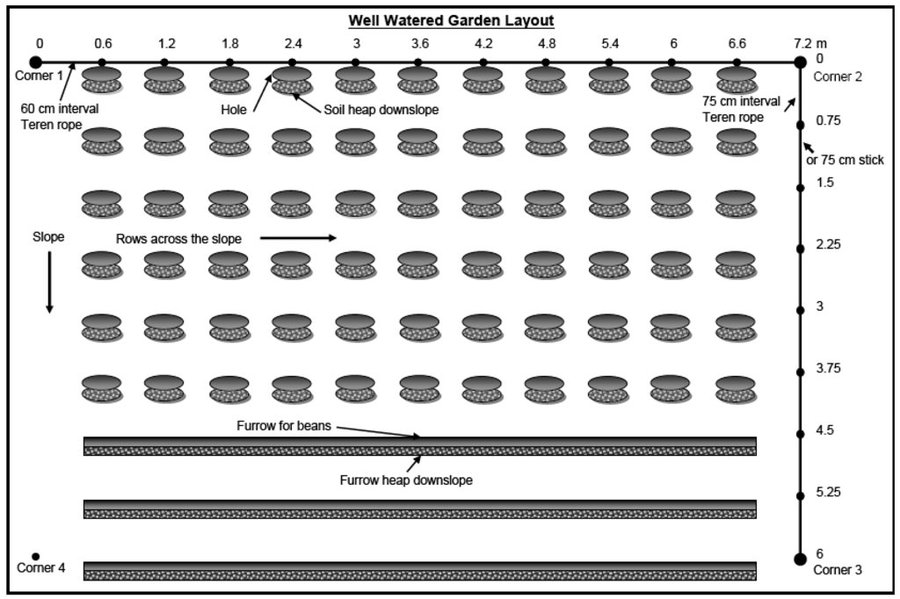
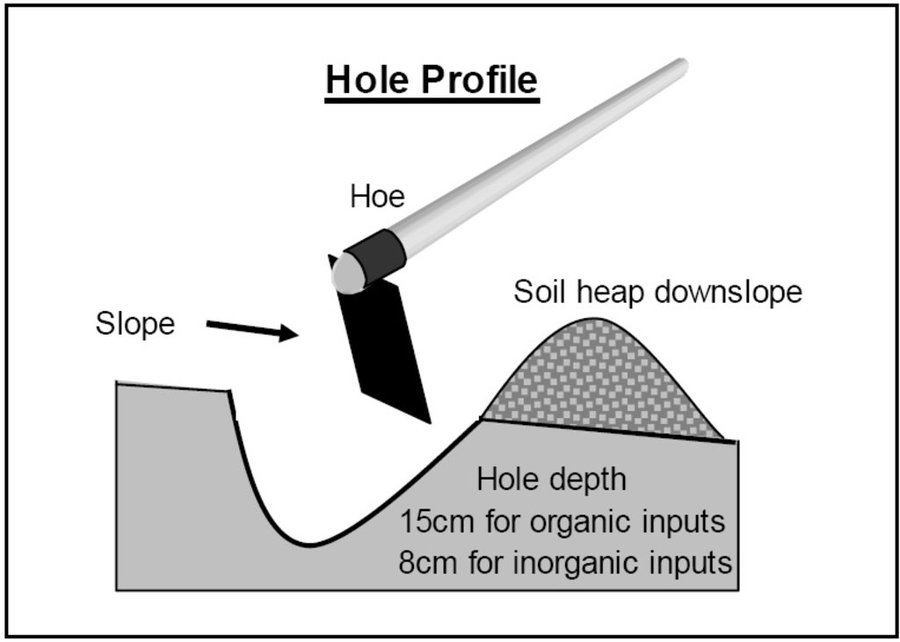
| Especifique a entrada | Unidade | Quantidade | Custos por unidade (USD) | Custos totais por entrada (USD) | % dos custos arcados pelos usuários da terra |
| Mão-de-obra | |||||
| Making compost, clearing, shaving, seed selection, gathering mulch | person days | 91,0 | 2,12 | 192,92 | 100,0 |
| Setting out, applying mulch, planting, thinning, staking gap filling, spraying, harvesting and storing | person days | 61,0 | 2,12 | 129,32 | 100,0 |
| Equipamento | |||||
| Tools set (hoe, terrain rope, pliers, measuring tape, spade, garden fork, panga) | acre | 1,0 | 2,952 | 2,95 | |
| Spraying pump (1 over 20 acres) | pieces | 0,05 | 27,27 | 1,36 | |
| Wheel barrow (1 over 20 acres) | pieces | 0,05 | 36,36 | 1,82 | |
| Watering can (1 over 5 acres) | pieces | 0,2 | 3,03 | 0,61 | |
| Material vegetal | |||||
| Seed | kg | 30,0 | 1,06 | 31,8 | 100,0 |
| Stakes (200 bundles used 2 times) | bundles | 100,0 | 0,76 | 76,0 | 100,0 |
| Mulch | trips | 10,0 | 30,3 | 303,0 | 100,0 |
| Fertilizantes e biocidas | |||||
| Pesticides | litres | 0,1 | 6,06 | 0,61 | 100,0 |
| Custos totais para a implantação da tecnologia | 740.39 | ||||
| Custos totais para o estabelecimento da Tecnologia em USD | 0.22 | ||||
| Especifique a entrada | Unidade | Quantidade | Custos por unidade (USD) | Custos totais por entrada (USD) | % dos custos arcados pelos usuários da terra |
| Mão-de-obra | |||||
| Removing weeds | days | 1,0 | 2,12 | 2,12 | 100,0 |
| Custos totais para a manutenção da tecnologia | 2.12 | ||||
Methods used increase soil fertility
One of the FGW is ‘to high standards’
Practicing ‘on time’ reduces this risk
FGW promotes crop rotation
Previously unused land can be put to use
Mulching and minimum tillage improve soil structure
Need for epuipment
More than doubles the traditional income
Use of livestock to provide manure
Minimum tillage and with thick mulch, labour on weeding is reduced
Increases yields by more than twice the traditional way
One of the biblical keys is ‘taking tithe and offering’
Awareness on causes and solutions of land degradation has been created
Mulching reduces rain drop hammer effect on soil
Minimum tillage improves soil structure
Mulching reduces runoff and evaporation
Mulching preserves soil moisture
Covered by mulch
Because of mulch and minimum tillage
Decomposed mulch eventually becomes part of the soil material
Mulch reduces this
Minimum tillage and mulch improves soil structure
Mulch becomes soil nutrient and reduces leaching
By use of manure
Mulching and minimum tillage increases soil organisms
Crop rotation breaks the pest cycle
Mulching increases soil percolation
Mulching reduces soil erosion